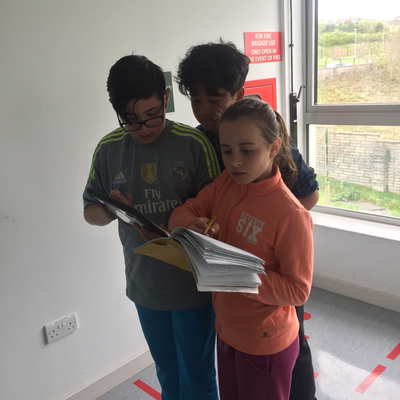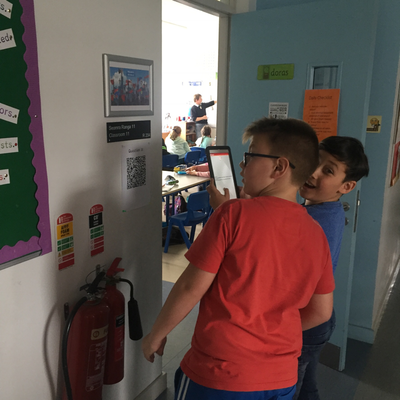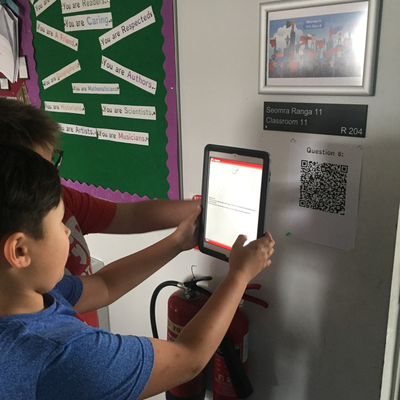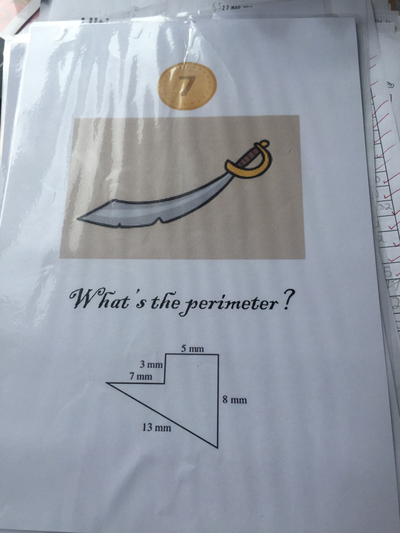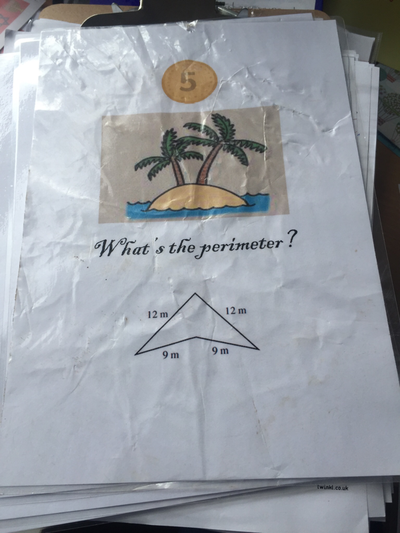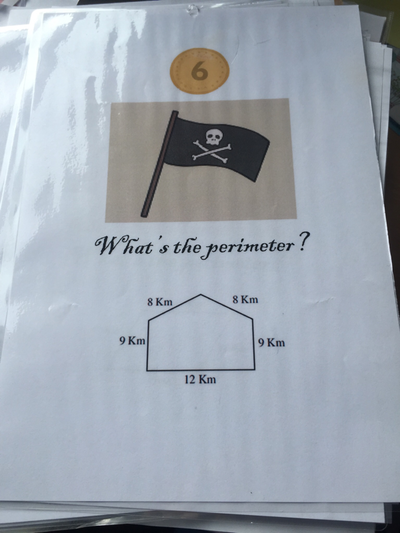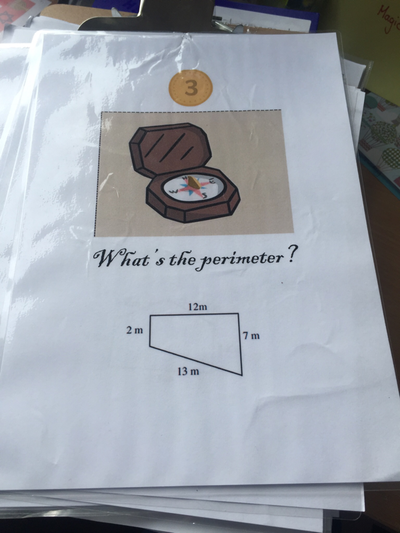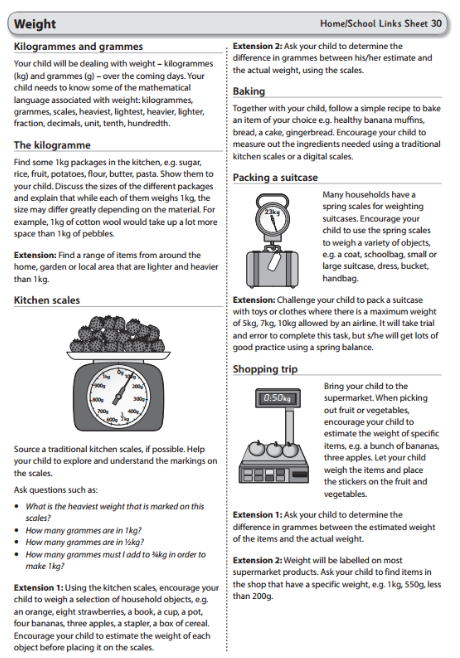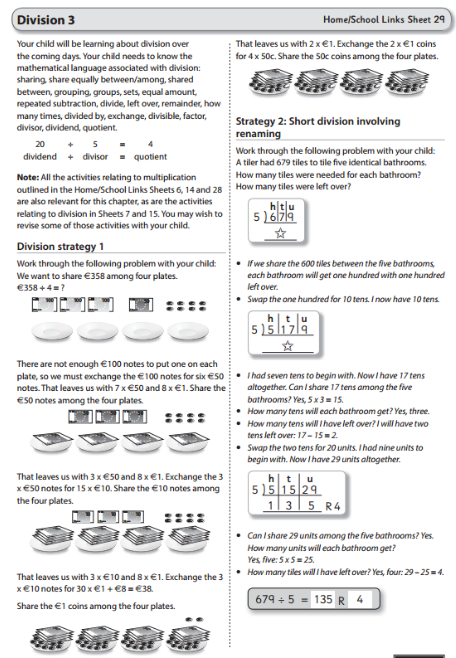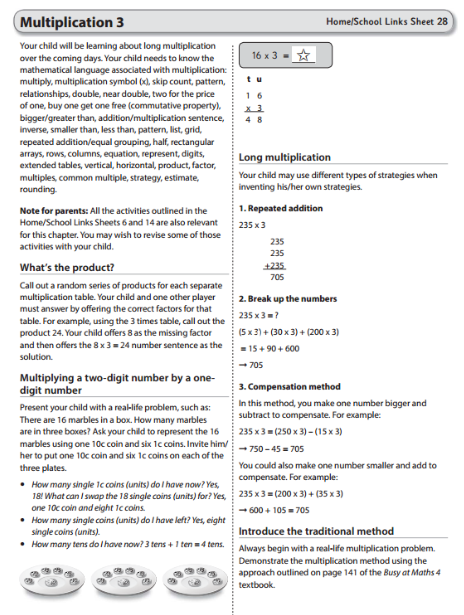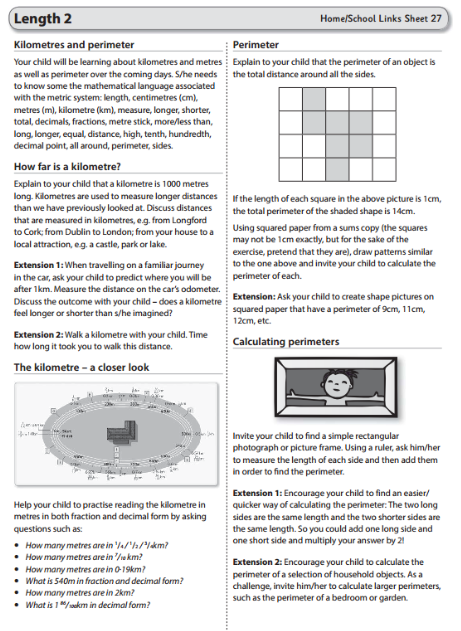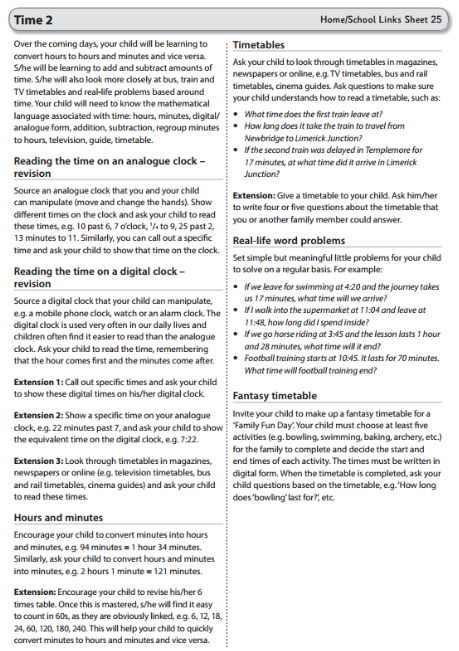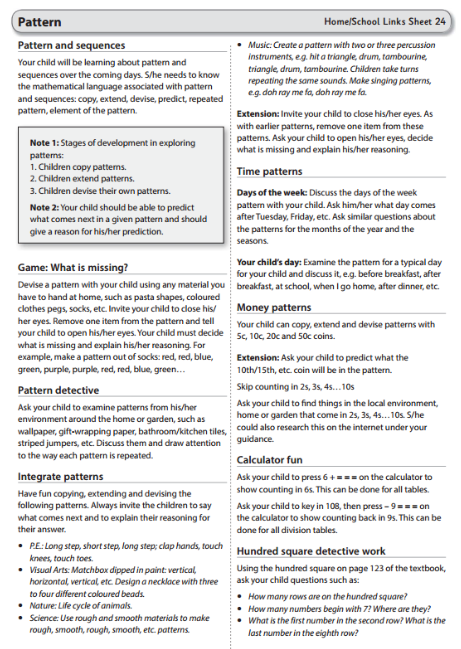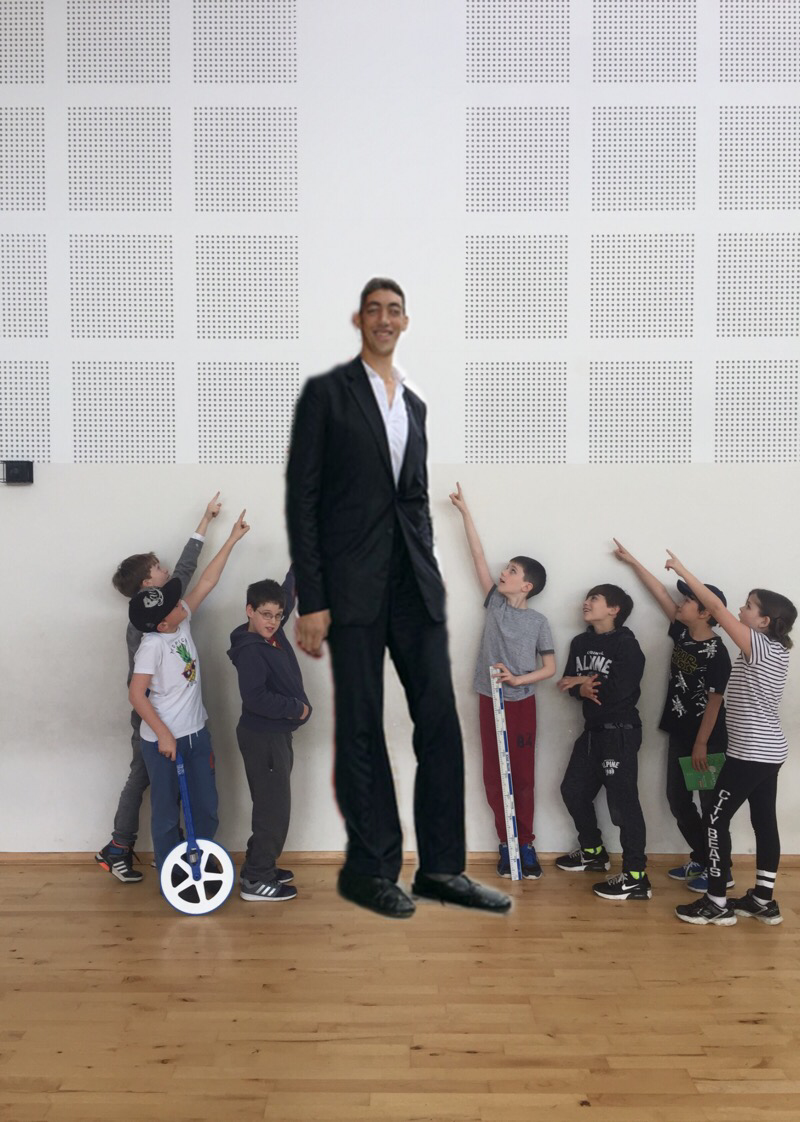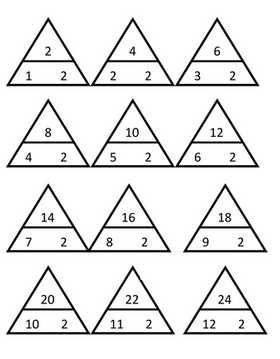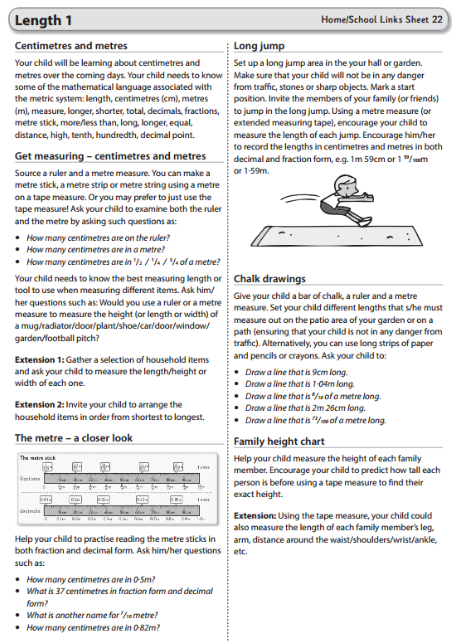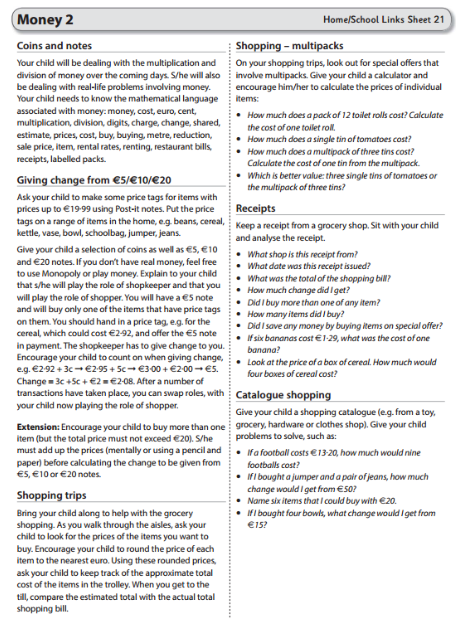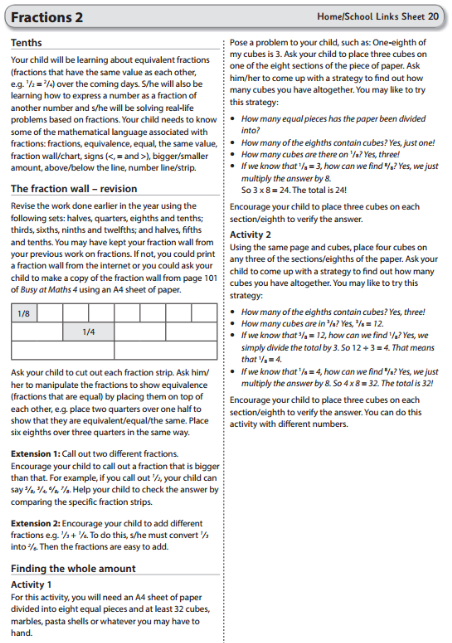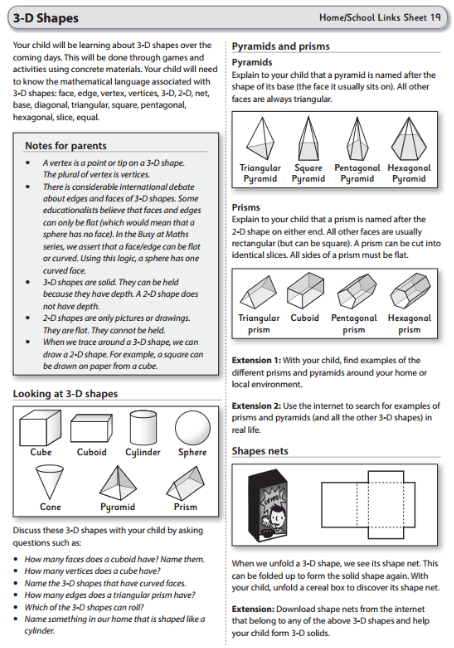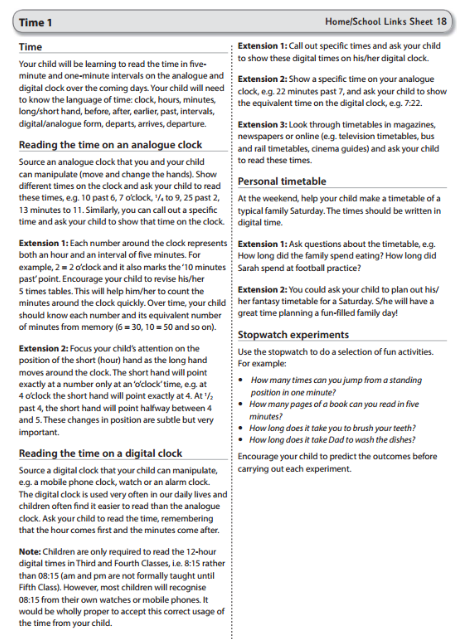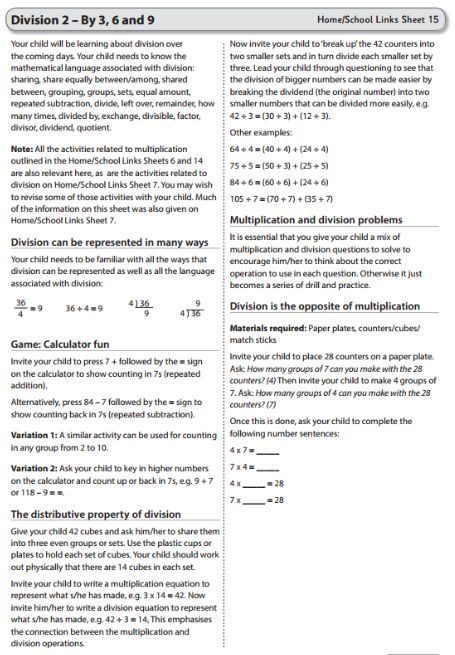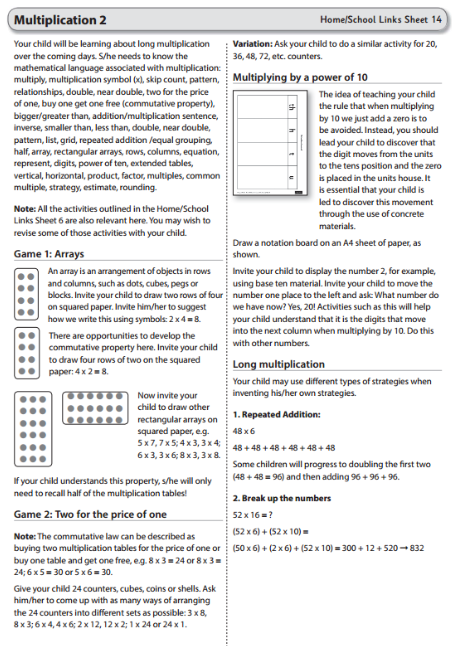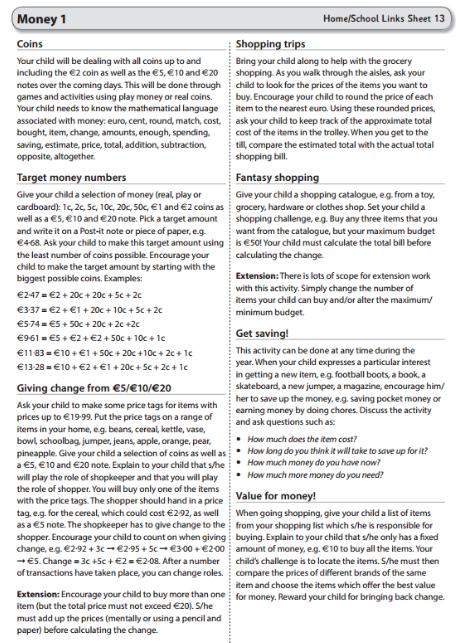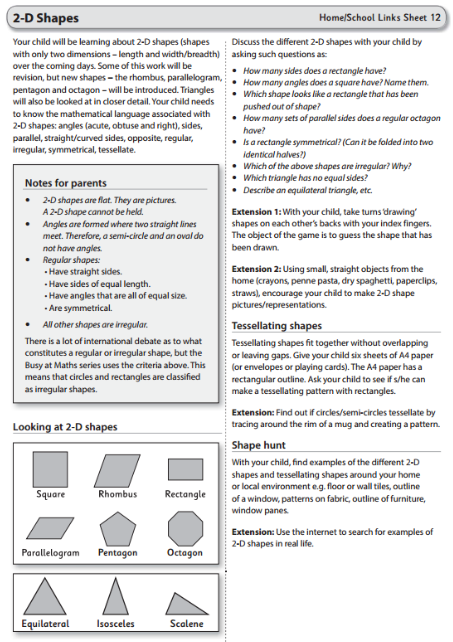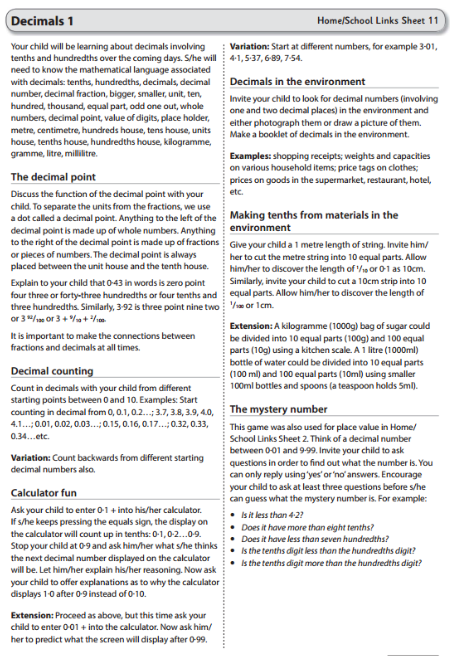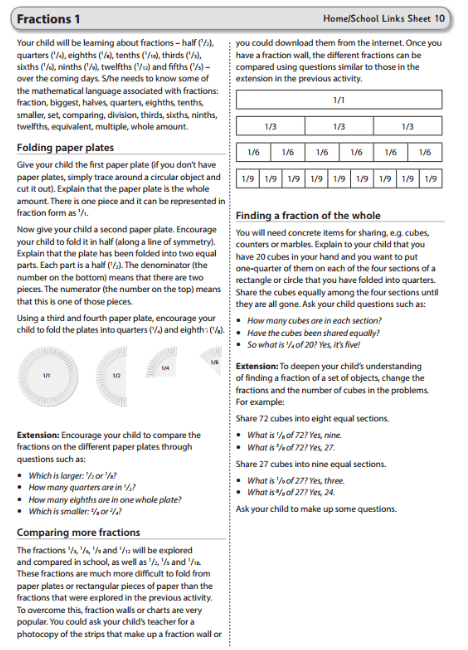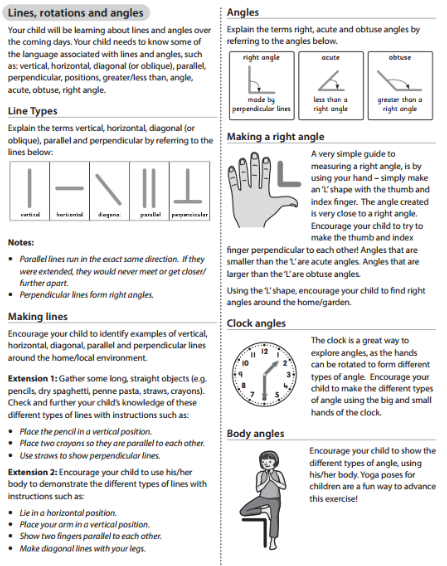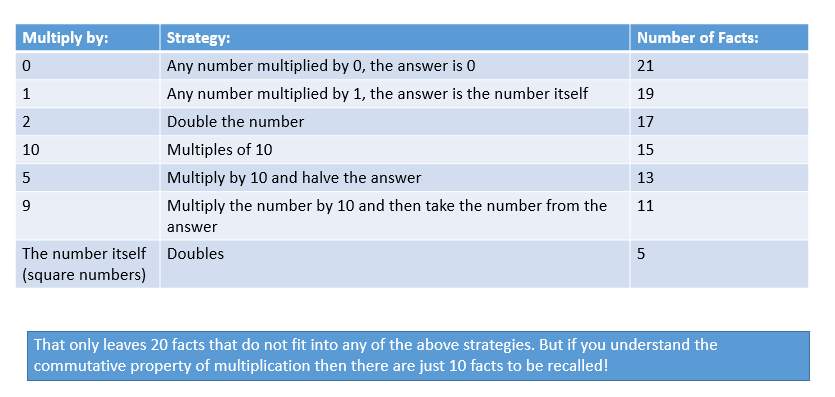QR Code Maths Trail
The kids completed a maths trail where they used the iPads to scan the maths question. The iPad would then tell them the question and once they've worked out the answer, they would go to find the next part of the trail.
Perimeter Treasure Hunt
We had a perimeter treasure hunt out in the yard. It was great to see the children so enthusiastic about maths!
Term 3: Week 3: Weight
Term 3: Week 1/2: Division 3
Term 2: Week 12: Multiplication 3
Term 2: Week 11: Length 2: Perimeter
Term 2: Week 10: Pattern/Time
The Tallest Man in the World
What are multiplication triangles?
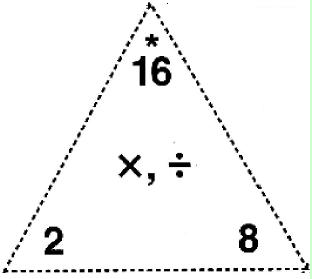
Multiplication and Division Fact Triangles are a good
way of understanding Fact Family. This method help
students learn the relationship between multiplication and division of numbers.Fact family shows sets of related numbers.
Example: Triangle fact card
These are the fact family for
this triangle fact card.
2 x 8 = 16
8 x 2 = 16
16 / 2 = 8
16 / 8 = 2
Below are examples of the 2 times tables multiplication and division triangles. I hope this helps!
way of understanding Fact Family. This method help
students learn the relationship between multiplication and division of numbers.Fact family shows sets of related numbers.
Example: Triangle fact card
These are the fact family for
this triangle fact card.
2 x 8 = 16
8 x 2 = 16
16 / 2 = 8
16 / 8 = 2
Below are examples of the 2 times tables multiplication and division triangles. I hope this helps!
Term 2: Week 8
Skip Counting Songs
Tune of: Row, Row, Row your boat:
3's
3,6,9, and 12 (Row, Row ,Row your boat)
15, 18, 21 (gently down the stream)
24 and 27 (Merrily, Merrily Merrily, Merrily)
30 - "thirtiriririririty" ( life is but a dream)
Tune of: Mary Had a Little Lamb
4's
4,8,12,16 ( Mary had a little lamb)
20,24 (little lamb,little lamb)
28, and 32(Mary had a little lamb)
36 40 (it's fleece was white as snow).
To the tune of: Happy Birthday
5's
5, 10 , 15 ( Happy Birthday to you)
20, 25, 30 ( Happy Birthday to you)
35 and 40 ( Happy Birthday to you)
45 and 50 ( Happy Birthday to you)
Tune of: Old McDonald had a Farm
6's
6, 12, 18, 24 (Old McDonald had a farm)
30, 36, (e i e i o)
With a 42 and a 48, (with a moo moo here and moo moo there)
54 and 60 (e i e i o)
To the tune of: Twinkle, Twinkle Little Stars
7's
7, 14, 21 (Twinkle, Twinkle, Little Star)
28 and 35 (How I wonder what you are)
42, 49 (Up above the sky so high)
56 and 63 ( Like a diamond in the sky)
70 is the last one ( Twinkle, Twinkle, Little Star)
Counting by 7s- now were done. (How I wonder what you are)
Multiples of 8, sung to “B-I-N-G-O”
8 16 24 (There was a farmer who had a dog)
32 & 40 (And Bingo was his name –o)
48 “f-o-ou-rty eight” (B -I -N-G –O)
56 “f-i-i-fty six” (B -I -N-G –O)
64 “s-i-i-xyt four” (B -I -N-G –O)
72 & 80 (And Bingo was his name -o!)
Multiples of 9, sung to Rudolf the Red-Nosed Reindeer
9 18 27 (Rudolf, the red nosed reindeer)
36 & 45 (Had a very shiny nose)
54 63 (And if you ever saw it)
72 & 81 (You would even say it glows)
After that, there’s 90 (All of the other reindeer)
Followed by 99 (Used to laugh and call him names)
Those are my 9’s facts (They never let poor Rudolf)
Now I know them all just fine!
Term 2: Week 6/7: Money 2
Term 2: Week 5: Fractions 2
Term 2: Week 4: 3-D Shapes
Term 2: Week 3: Time 1
Term 2: Week 1: Division 2
https://www.khanacademy.org/math/arithmetic-home/multiply-divide/mult-digit-div-2/v/division-2
Week 16: Multiplication 2
https://www.khanacademy.org/math/arithmetic-home/multiply-divide/multi-digit-mult/v/multiplication-6-multiple-digit-numbers
Week 15: Money
Week 14: 2-d shapes
Week 13: Decimals
Week 11: Fractions
Week 9: Lines and Angles
Week 8: Division 1:
Your child will be learning about division over the coming days. Your child needs to know the mathematical language associated with division: sharing, share equally between/among, shared between, grouping, groups, sets, equal amount, repeated subtraction, divide, left over, remainder, how many times, divided by, exchange, divisible, factor, divisor, dividend, quotient.
20 ÷ 5 = 4
dividend ÷ divisor = quotient
Division can be represented in many ways Your child needs to be familiar with all the ways that division can be represented as well as all the language associated with division:
_8____
48 = 8 48 ÷ 6 = 8 6 ) 48 6 ) 48
6 8
Activities to do at home:
Equal sharing 1: Sharing different items Give your child 15 marbles, cubes, shells, clothes pegs, etc. and three plates. Ask him/her to share the 15 marbles equally among the three plates. S/he should count them out one at a time until all 15 items have been shared equally.
Note: Later, your child should be able to put more than one at a time onto each plate. Ask questions such as the following:
How many marbles are on each plate? Yes, five.
Did each plate get the same amount? Yes.
So, 15 shared among three plates equals five.
Now add the sets together: 5 + 5 + 5 = 15 or 3 x 5 = 15 (this leads to the understanding of division as repeated subtraction).
Equal sharing 2: Division with remainders Give your child 23 cubes, counters, etc. and ask him/her to share them into three even groups or sets. S/he should work out physically that there are seven cubes in each set with two cubes left over.
Equal grouping activity: How many groups? Pose the problem: There are 30 apples in a box. How many bags of six can be filled from the box? Let 30 counters or cubes represent the apples and let paper plates represent the boxes. Invite your child to move the counters to form groups of six.
There are five bags/groups of six.
So 30 ÷ 6 = 5.
|
|
Week 7: Multiplication 1:
This week your child is learning about short multiplication and learning lots of tricks and strategies for learning their times tables.
There are commutative, associative and distributive laws of multiplication:
Commutative: a x b = b x a
Associative: (a x b) x c = a x (b x c)
Distributive: a x (b + c) = (a x b ) + (a x c)
a x (b - c) = (a x b) - (a x c)
There are 121 multiplication facts that children are required to recall from 0 x 0 to 10 x 10. It is essential that children understand relationships in the number system together with the derivation of facts from known facts to alleviate the pressure of knowing all 121 facts.
